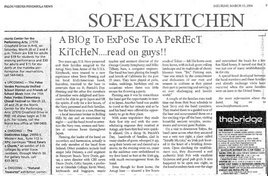The scientific evidence for the health benefits of the cocoa bean can be persuasive. Take the notion that chocolate fat is good fat. Chocolate contains cocoa butter which is high in saturated fat. However, some of this fat comes from stearic acid, which is converted by the liver into a heart-healthy, monounsaturated fat. This does not raise the level of LDL cholesterol, the bad cholesterol, in your blood, and may even lower it.Sadly, this does not mean a Mars a day will melt the bad cholesterol away. Darker, posher chocolates contain 70% cocoa butter, which provides stearic acid. Most commercial chocolate bars, however, contain only about 20% cocoa butter, along with a dollop of bad fat that can be catastrophic for your heart. Indeed, the average (54g) bar of commercial milk chocolate contains 17g of fat, of which 10g is saturated. There are clearly better routes to low cholesterol than the chocolate counter.
Another popular claim is that chocolate is bulging with antioxidants that can improve your heart health. The darker the chocolate, the more concentrated they are. This at least is somewhat accurate. Chocolate contains antioxidants known as polyphenols or flavonoids. These are the same kind of antioxidants found in your "medicinal" glass of red wine or green tea. A growing body of research, cited recently by the American Heart Association, suggests these antioxidants can lower high blood pressure, and may lower "bad" cholesterol too.
"Flavonoids do mop up the free radicals in your body and can prevent the furring of arteries," confirms Toni Steer, a nutrition scientist at Human Nutrition Research in Cambridge. "However, a richer source of antioxidants would be brightly coloured fruit and vegetables." The British Heart Foundation also believes these claims are overhyped. "There is some evidence that small quantities of dark chocolate might have short-term beneficial effects on the circulation," says Judy O'Sullivan, a cardiac nurse at the BHF. "But it is important to remember that chocolate is far more often part of the problem for heart health than the solution."
One thing scientists do know for sure is that chocolate is packed with calories. "You can't just glug down gallons of fat and sugar and expect to be healthy," says Steer. "For a start, you'll put on weight. You will then be at risk of heart disease because you are overweight."
But what about claims that chocolate is a rich source of nutrients? It's hard to open a magazine these days without finding some article claiming it is packed with vitamins, iron (great for menstruating women), and magnesium (great for PMT). Mercifully, for those of us who stockpile Green & Blacks at certain times of the month, such claims are not complete fantasy. Chocolate does contain some iron, calcium, magnesium and potassium as well as vitamin E and B vitamins. It is also a source of magnesium, deficiency of which has been linked to PMT. However, says BNF's Lisa Miles, "magnesium deficiency is rare". The levels of these vitamins in chocolate are relatively low. And your 100g bar of plain chocolate only contains about half as much iron as 100g of dried figs.
Since the average bar of chocolate packs 280 calories and a huge 31g of sugar, even the most deluded hedonist would struggle to see the Easter bunny as healthy. But perhaps the Mayans were right, and we are simply under the spell of something mind-warping, even god-like. Chocolate, after all, contains a substance called phenylethylamine, the "love drug" which triggers the feeling of falling in love. It also contains anandamide, the "bliss molecule" that plays a role in addiction. Now the fact that food-mood scientist Peter Rogers of Bristol University has established in trials that these compounds actually have no physiological effect on us is by the by. Either way, it seems, we are powerless to resist.






 by using a c or bowl in a small saucepan over very gentle heat. The water must be kept below simmering to prevent steam from curling up and hitting the chocolate. If steam gets into the melted chocolate it will immediately thicken the mixture to a stiff mass. If this does happen, however, you can rescue the chocolate by softening it again. To do this, add 1-2 tb of vegetable shortening (never use butter as it contains moisture which will cause the chocolate stiffen even more!) to the chocolate and stir vigorously. You can also melt chocolate directly over very low heat in a heavy gauge saucepan, but you must watch the mixture carefully.
by using a c or bowl in a small saucepan over very gentle heat. The water must be kept below simmering to prevent steam from curling up and hitting the chocolate. If steam gets into the melted chocolate it will immediately thicken the mixture to a stiff mass. If this does happen, however, you can rescue the chocolate by softening it again. To do this, add 1-2 tb of vegetable shortening (never use butter as it contains moisture which will cause the chocolate stiffen even more!) to the chocolate and stir vigorously. You can also melt chocolate directly over very low heat in a heavy gauge saucepan, but you must watch the mixture carefully.




